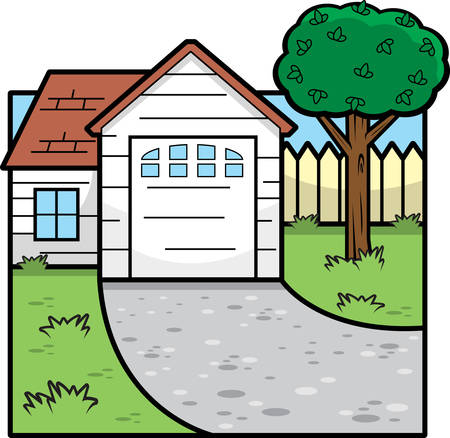Introduction to Historic Preservation Societies
Historic preservation societies play a vital role in protecting the architectural and cultural heritage of communities across the United States. These organizations are typically nonprofit groups made up of passionate individuals—historians, architects, community leaders, and concerned citizens—who are dedicated to preserving buildings, landmarks, and neighborhoods that reflect Americas rich history.
Their mission goes beyond simply saving old buildings; its about maintaining a tangible connection to our past. Whether it’s a Victorian home, a mid-century modern house, or a historic commercial building, these structures tell the story of the people who lived and worked there. Preservation societies aim to protect these stories by advocating for thoughtful renovation, proper maintenance, and historically accurate restoration.
What Do Historic Preservation Societies Do?
These societies engage in a variety of activities that support their mission. Here’s an overview of their common roles:
| Function | Description |
|---|---|
| Advocacy | Lobby for laws and regulations that protect historic properties at local, state, and federal levels. |
| Education | Host workshops, tours, and lectures to inform the public about the value of preservation. |
| Consultation | Provide guidance to homeowners and developers on how to renovate homes while preserving historic integrity. |
| Grants & Funding | Offer or help secure financial assistance for restoration projects. |
| Research & Documentation | Compile historical records and architectural data for future generations. |
Why Are They Important?
Historic preservation societies help maintain the character and identity of American towns and cities. By preserving unique architecture and historical sites, they contribute to community pride, tourism, education, and even property values. In many cases, they also help prevent demolition or inappropriate alterations of structures that are part of the nations cultural fabric.
A Community Connection
When you work with a preservation society on your home renovation project, youre not just fixing up a house—you’re helping to preserve a piece of local history. These organizations often serve as valuable partners for homeowners who want to stay true to their propertys original design while updating it for modern use.
2. How Preservation Societies Influence Home Renovation
Historic preservation societies play a key role in guiding how homeowners renovate properties that fall within designated historic districts or are listed as historic landmarks. Their main goal is to protect the character and architectural integrity of these homes, ensuring that any updates align with the historical context of the neighborhood.
Understanding Design Guidelines
One of the first ways preservation societies influence home renovation is through design guidelines. These are detailed rules that outline what types of changes are acceptable, from materials used to color schemes and structural modifications. These guidelines help maintain the original look and feel of a property while allowing for modern updates that don’t compromise its historical value.
Common Areas Covered by Design Guidelines:
| Feature | Typical Requirements |
|---|---|
| Windows and Doors | Must match original size, shape, and style; usually wood-framed |
| Siding and Exterior Materials | Original materials should be preserved or replaced with similar ones |
| Rooflines | No major changes to original roof shape or height |
| Additions | Must be clearly distinguishable yet compatible with the existing structure |
The Approval Process
If your home falls under the jurisdiction of a preservation society, you’ll likely need to go through an approval process before starting any renovations. This typically involves submitting plans for review, attending hearings, and possibly revising your project based on feedback. While this can slow things down, it ensures that changes support the long-term preservation goals of the community.
Steps in the Approval Process:
- Submit renovation plans and documentation to the local preservation board.
- Attend a public hearing or meeting for feedback.
- Make necessary adjustments based on recommendations.
- Receive final approval before starting construction.
Maintaining Historical Integrity
The core mission of preservation societies is to ensure that renovations respect a propertys historical significance. This means not only preserving outward appearances but also using appropriate construction methods and materials whenever possible. Even interior work may require careful consideration if it affects significant architectural features.
Tips for Working with Preservation Societies:
- Start early—reach out to your local society as soon as you begin planning.
- Hire contractors familiar with historic renovations.
- Document all existing conditions thoroughly before making changes.
- Be flexible—some compromises may be necessary to meet standards.
By understanding how preservation societies operate and what they expect from homeowners, you can navigate your renovation project more smoothly while helping preserve the unique charm and history of your home and neighborhood.
![]()
3. Working with Local Regulations and Preservation Boards
When renovating a historic home in the U.S., it’s essential to understand and follow local regulations. These rules are put in place to protect the character of historic neighborhoods and ensure that any updates or changes respect the original architecture and cultural significance of the property.
Understanding Zoning Laws and Local Ordinances
Zoning laws vary from city to city, but they generally dictate how properties can be used—residential, commercial, or mixed-use—and what kind of renovations are allowed. If your home is located within a designated historic district, additional ordinances may apply that restrict changes to exterior features like windows, roofing materials, or even paint colors.
Common Restrictions in Historic Districts
| Feature | Typical Restrictions |
|---|---|
| Exterior Facade | Must maintain original appearance; changes require approval |
| Windows and Doors | Replacement must match historical style and material |
| Roofing Materials | Limited to historically accurate materials (e.g., slate, wood shake) |
| Paint Colors | Often limited to pre-approved palettes from the time period |
Working with Historic Preservation Boards
Historic preservation boards are typically part of your local government and work closely with preservation societies. Their role is to review renovation proposals and ensure they align with community standards for historic integrity. Before starting your project, youll likely need to submit plans for approval through a process known as a Certificate of Appropriateness (COA).
The COA Process Usually Includes:
- Submitting architectural drawings or sketches of proposed work
- Providing detailed descriptions of materials and finishes
- Attending a public meeting where the board reviews your proposal
- Receiving approval before any construction begins
The Role of Preservation Societies in This Process
Preservation societies often act as advocates for homeowners during this process. They can help interpret local regulations, recommend qualified contractors familiar with historic guidelines, and even assist with grant applications or funding opportunities. By collaborating with both municipal boards and homeowners, these societies help ensure that renovation projects balance modern needs with historical authenticity.
If youre planning a renovation on a historic property, getting familiar with local rules early on—and working with both the preservation board and your local society—can save time, money, and stress down the road.
4. Benefits of Partnering with a Preservation Society
When taking on a historic home renovation, working with a preservation society can be one of the smartest moves you make. These organizations offer more than just moral support—they provide real, tangible advantages that can help your project succeed while preserving the character and integrity of your property.
Access to Grants and Financial Incentives
One of the biggest benefits is potential access to grants, tax credits, and other financial incentives designed for historic preservation. Many local, state, and federal programs offer funding for homeowners who maintain or restore properties within designated historic districts. Preservation societies often have detailed knowledge of these opportunities and can guide you through the application process.
Examples of Possible Financial Support:
| Type of Support | Description | Who Offers It |
|---|---|---|
| Historic Preservation Grants | Funds for restoring original features like windows, facades, or roofing. | State Historic Preservation Offices (SHPOs), local non-profits |
| Federal Tax Credits | Up to 20% credit for qualified rehabilitation expenses on income-producing properties. | National Park Service (NPS) |
| Local Property Tax Abatements | Temporary reduction in property taxes after approved renovations. | City or County Governments |
Technical Expertise and Guidance
Renovating a historic home isnt quite the same as a modern remodel—it requires special knowledge about traditional materials, architectural styles, and construction techniques. Preservation societies often employ or partner with architects, historians, and contractors who specialize in historic buildings. They can help you make the right choices to keep your renovation authentic and compliant with local regulations.
Support Navigating Local Guidelines
If your property falls within a designated historic district, there may be specific rules about what changes you can make. These rules can feel overwhelming at first, but preservation societies are well-versed in them. They can help you understand what’s allowed and even advocate on your behalf during review board meetings.
Increased Property Value and Community Appeal
A well-maintained historic home often stands out in the neighborhood—and not just for its charm. Studies have shown that homes in preserved historic districts tend to hold or increase their value over time better than comparable properties outside those areas. Working with a preservation group ensures your renovation adds both beauty and long-term value to your investment.
The Value-Add of Historic Preservation:
| Benefit | Impact on Homeowners |
|---|---|
| Curb Appeal | A restored historic facade increases interest from buyers and neighbors alike. |
| Market Value Stability | Historic neighborhoods tend to weather housing market fluctuations better. |
| Pride of Ownership | Homeowners feel a deeper connection to their community’s heritage. |
By teaming up with a preservation society, youre not only preserving history—youre also tapping into resources that make your renovation smoother, smarter, and more rewarding in the long run.
5. Challenges and Considerations in Restoring Historic Homes
Restoring a historic home can be a rewarding journey, but it also comes with its fair share of challenges. Homeowners who work with historic preservation societies often face unique obstacles that differ from standard renovation projects. Below are some common issues and important considerations to keep in mind.
Sourcing Period-Appropriate Materials
One of the biggest hurdles is finding materials that match the original look and feel of the home. Whether its woodwork, tiles, hardware, or plaster finishes, sourcing authentic or reproduction materials can be time-consuming and costly. Preservation societies can help by connecting homeowners with trusted suppliers or even salvaged material resources.
Examples of Hard-to-Find Materials
| Material | Challenge | Possible Solution |
|---|---|---|
| Original Wood Trim | No longer mass-produced | Custom millwork or reclaimed lumber |
| Historic Tiles | Unique colors/patterns not available | Specialty tile makers or salvage yards |
| Old-Style Windows | Modern codes may not allow original design | Use reproduction windows that meet code |
Navigating Building Codes and Regulations
Historic homes often fall under strict guidelines set by local or national preservation boards. These rules can affect what changes you’re allowed to make—especially on the exterior. Even minor updates like painting or adding a fence might require approval.
Tips for Working Within Code Requirements
- Consult early with your local historic preservation society.
- Apply for necessary permits before starting any work.
- Work with contractors experienced in historic renovations.
Balancing Modern Comforts with Historical Accuracy
Many homeowners want modern amenities like central air conditioning, updated kitchens, and smart-home technology—but installing these without disrupting the home’s character can be tricky. Preservation societies often provide guidance on how to integrate these features subtly and respectfully.
Common Modern Updates and Historic-Friendly Solutions
| Modern Feature | Potential Conflict | Preservation-Friendly Option |
|---|---|---|
| HVAC Systems | Ductwork may damage walls/ceilings | Ductless mini-split systems or hidden ducts |
| Smart Lighting | Wiring through plaster walls is invasive | Wireless smart bulbs or surface-mounted wiring covers |
| Kitchens & Bathrooms | Modern styles clash with period design | Select vintage-inspired appliances and fixtures |
The Emotional Investment Required
A historic renovation isn’t just about money—it takes patience and passion. Delays are common, unexpected issues arise (like outdated wiring or structural concerns), and approvals take time. Having a strong support system, including guidance from a preservation society, makes the process smoother and more enjoyable.
The key is understanding that restoring a historic home is both an art and a responsibility. With thoughtful planning and the right partnerships, it becomes possible to bring old charm into modern living while preserving history for future generations.
6. Case Studies of Successful Renovations
Historic preservation societies have played a vital role in many successful home renovation projects across the United States. These real-life examples not only showcase the beauty of restored historic homes but also highlight effective strategies and valuable lessons learned during the process.
Example 1: Victorian Home in Savannah, Georgia
This 1890s Victorian home was in serious disrepair when purchased. The new homeowners partnered with the local preservation society to ensure all renovations complied with historical standards. The society provided access to original blueprints, recommended qualified restoration contractors, and helped navigate local zoning laws.
Key Strategies:
- Collaborated early with the preservation society
- Used historically accurate materials for exterior repairs
- Sought grants for restoring original woodwork and stained glass
Lessons Learned:
- Engaging the preservation society from the start avoids costly redesigns later
- Financial support is often available through historical grants and tax credits
Example 2: Craftsman Bungalow in Pasadena, California
This 1915 Craftsman-style bungalow needed modernization while preserving its architectural integrity. The homeowners worked closely with Pasadena Heritage, a local preservation organization, which guided them through updating systems like plumbing and electrical without disrupting original woodwork or built-ins.
Key Strategies:
- Phased renovation plan to manage budget and minimize disruption
- Incorporated modern amenities discreetly to maintain aesthetic
- Used workshops offered by the preservation group to learn best practices
Lessons Learned:
- You can blend modern comfort with historic charm using thoughtful design
- Educational resources from societies are invaluable for first-time restorers
Example 3: Federal-Style Townhouse in Boston, Massachusetts
A couple bought this 1830s townhouse in Beacon Hill with plans to restore it as their family home. Working hand-in-hand with Historic New England, they ensured that all updates—especially kitchen and bathroom upgrades—respected the home’s historic character.
Key Strategies:
- Detailed documentation of each room before starting work
- Consulted with preservation architects recommended by the society
- Sourced period-appropriate hardware and fixtures through society networks
Lessons Learned:
- Documentation helps preserve originality even when changes are made
- The right partners make balancing authenticity and livability possible
Comparison Table of Renovation Projects
| Project Location | Home Style & Era | Main Preservation Focus | Key Support from Society |
|---|---|---|---|
| Savannah, GA | Victorian (1890s) | Exterior Restoration & Woodwork | Blueprints, Grants, Contractor Referrals |
| Pasadena, CA | Craftsman (1915) | Modern Systems Integration | Workshops, Design Guidance, Phased Planning Help |
| Boston, MA | Federal (1830s) | Interior Detailing & Layout Preservation | Architect Consultations, Sourcing Materials, Documentation Tips |
These case studies show how working with historic preservation societies can turn complex renovation projects into rewarding experiences. With expert guidance and community support, homeowners can successfully honor a propertys past while creating spaces they love today.


